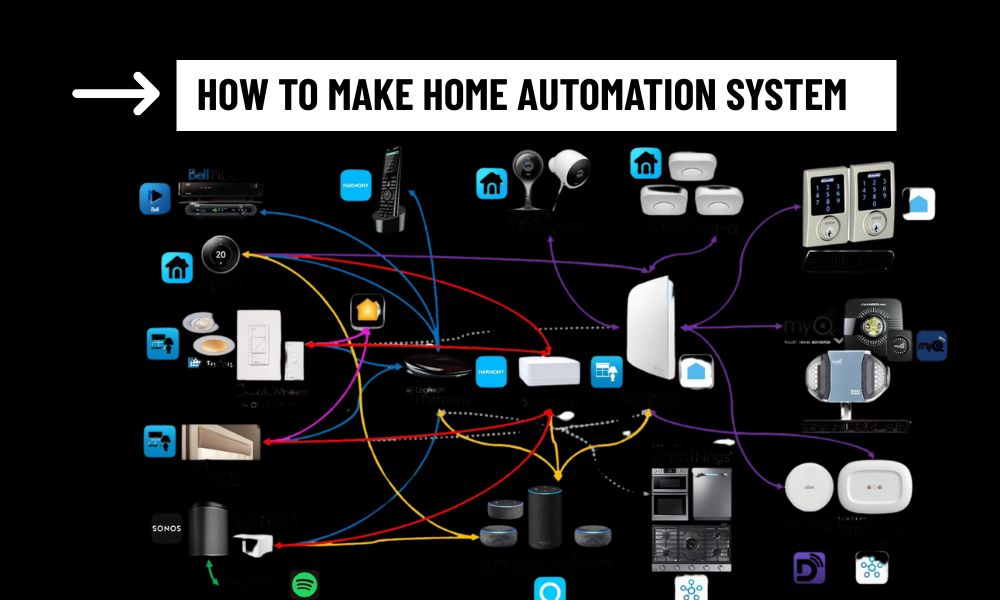In today’s digitally connected world, smart homes are no longer a futuristic concept—they’re fast becoming the norm. As more people explore the potential of smart living, a common and important question emerges: how to make home automation system that is not only functional but also reliable, secure, and adaptable to real life?
The truth is, building a smart home is not about filling your space with expensive gadgets. It’s about designing a system that serves your daily routines, anticipates your needs, and simplifies your environment. This article outlines a practical roadmap to help you build a personalized home automation system, even if you’re starting from scratch.
1. Start with Lifestyle, Not Technology
When approaching how to make home automation system, the biggest mistake is beginning with products instead of problems. Rather than asking “What smart devices should I buy?”, ask “What do I want my home to do for me?”
Do you want lights to automatically turn off when you leave a room? Would you like your thermostat to adjust based on your presence and outside temperature? Do you need enhanced security for when you travel? Or maybe you’re interested in reducing your monthly energy consumption.
Clearly identifying these needs will help guide all other decisions—from platform selection to device types and automation rules.

2. Choose Your Smart Home Framework Wisely
Every home automation setup requires a brain: a central system that connects, controls, and coordinates your devices. This can be a cloud-based service like Google Home, Amazon Alexa, or Apple HomeKit, or a locally hosted platform like Home Assistant, which offers more control and privacy.
Each system has trade-offs:
- Cloud-based systems are easier to set up and integrate with popular devices, but often rely on internet access and external servers.
- Local systems provide greater flexibility, data privacy, and speed, but require more technical knowledge.
If you’re serious about understanding how to make home automation system that’s future-proof, consider starting with a hybrid system—easy enough to get running quickly, but flexible enough to expand and customize later.
3. Build the Foundation with Core Devices
Once the platform is chosen, it’s time to add the building blocks of your smart home. Start with a few essential devices that provide immediate value. Good starting points include:
Smart lighting: For hands-free illumination and energy savings.
- Thermostats and climate control: For comfort and efficiency.
- Door sensors and cameras: For basic home security.
- Voice assistants or smart speakers: For central control and accessibility.
What makes these devices “smart” isn’t just remote access, but how they interact with each other. For instance, a motion sensor can trigger hallway lights after dark. A door lock can disarm an alarm when you arrive home. These small automations make your home feel intuitive, not robotic.
4. Build Automations That Adapt to You
The true magic of home automation lies in the automation, not the remote control. Setting up intelligent, contextual actions allows your home to behave like a responsive system, not a collection of buttons.
For example:
- Set routines based on time: Morning lights, evening ambient scenes.
- Trigger actions based on location: Unlock the door and turn on lights when you’re nearby.
- Use sensor data: Adjust blinds when direct sunlight is detected.
Platforms like Home Assistant or Google Home allow you to combine multiple triggers and conditions for advanced behavior. As you learn more about how to make home automation system dynamic and personalized, you’ll discover the power of layering logic and context.
5. Think Long-Term: Security, Privacy, and Expansion
A smart home is only as strong as its weakest link. Unfortunately, smart devices—especially cheaper ones—can become entry points for hackers or data leaks. Therefore, any serious discussion on how to make home automation system must address cybersecurity and privacy.
Best practices include:
- Isolating smart devices on a separate network (VLAN)
- Regularly updating device firmware
- Using strong, unique passwords
- Favoring platforms that support local control and data encryption
Additionally, plan for growth. Even if you begin with just lighting and climate control, you might later add voice assistants in multiple rooms, AI-based video surveillance, or energy monitoring systems. Choose open, widely supported platforms and devices to make scaling up smooth and future-ready.

6. Make It Intuitive for Everyone in the Home
A smart home should not require technical knowledge to use. Even if you enjoy experimenting with automations, your family members or house guests may not.
Use scenes, physical switches, voice control, and mobile dashboards to ensure accessibility. Custom dashboards (like those offered in Home Assistant) can make the experience feel unified and user-friendly across devices and platforms.
Creating simplicity in user experience is just as crucial as mastering the technology behind it. Ultimately, learning how to make home automation system truly effective means thinking from the perspective of every person who lives in or visits your home.
Conclusion: A Smart Home Is a Thoughtful Home
At its core, understanding how to make home automation system is about more than connecting devices—it’s about designing a system that enhances life. A good system reduces friction, saves time, increases safety, and adds comfort. And it does so without overwhelming the user with unnecessary complexity.
By starting with your needs, selecting a reliable platform, investing in key devices, and building thoughtful automations, you can create a smart home that feels seamless and empowering—not just “techy.”
In a world that’s becoming increasingly automated, the smartest homes aren’t those filled with the most gadgets—but those that respond intelligently to the people who live inside them.
